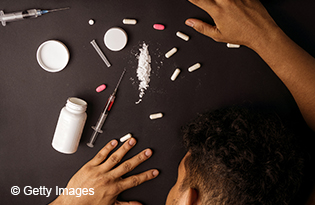The "4 Cs" of substance use disorder
8/21/2025 by Benjamin Lai, M.B., B.Ch., B.A.O.

What if I told you that there is a condition that, up until recently, has killed more people per year than all types of cancers except for cancer of the lung and the bronchus?
This same condition is one of the leading causes of death among adolescents and young adults and has contributed to a decreased life expectancy in the United States. Sadly, only one in four people with this condition receive treatment. Not because the treatment is ineffective, but because of stigma, challenges in getting treatment and shame.
Substance use disorders (SUD), including alcohol and opioid use disorder, are chronic medical conditions. It involves biochemical and structural changes in the brain that cause a person to lose CONTROL over using a substance, to use a substance COMPULSIVELY, to experience CRAVINGS, and to use the substance even though they may suffer from negative physical, social and emotional CONSEQUENCES. These are the four pillars of addiction, known as the "4 Cs." The chemical that is most often associated with addiction is dopamine.
This chemical is present in the brain and gives the reward sensation when released. It's the same chemical that we get when we hug an old friend or after eating our favorite dessert. Drugs of abuse can cause a sudden and dramatic release of this chemical. For example, the amount of dopamine released after methamphetamine use is almost 1,000% of that when eating a satisfying meal. With repeated use over time, however, the amount of dopamine needed to achieve the same pleasurable and euphoric sensation increases. People also experience a sense of unease and anxiety when they do not use drugs, together with unpleasant and sometimes terrifying symptoms of withdrawal. They no longer use drugs to 'get a high,' but simply to avoid 'feeling bad.' Simply put, SUD results from biochemical changes that could significantly impact a person's physical and mental state. It is NOT because of moral failure or a weak character.
There is a strong genetic component to SUD. For example, a person is seven times more likely to develop alcohol use disorder if both of their parents have the condition.
The good news is that effective behavioral treatments and medications are available, including medications to help treat alcohol and opioid cravings. People with opioid use disorder who are prescribed buprenorphine, one of three approved medications to treat this condition, are significantly more likely to abstain from further use. This life-changing treatment means that they can now engage in counseling and therapy because their minds are no longer preoccupied with finding ways to avoid unpleasant withdrawal symptoms or dealing with intense cravings. These medications, together with increasing availability of naloxone (also known as Narcan, which is available over the counter), have led to a 27% reduction in overdose deaths in 2024. Naloxone can temporarily reverse an opioid overdose so that Emergency Medical Services can be called to help.
There is still much to do. Those with SUD often find it challenging to open up about their drug use. To further reverse the trend of overdoses and to help people and families in need, we must understand that SUD is a chronic but very treatable condition. With the proper support and encouragement, one can achieve long-term recovery.
If you or someone you know struggles with SUD, primary care clinicians at Mayo Clinic in Rochester and Kasson can help.
Benjamin Lai, M.B., B.Ch., B.A.O., is a family medicine physician in the Baldwin building in Rochester, Minnesota. He is chair of Mayo Clinic's Opioid Stewardship Program Subcommittee and a member of Olmsted County’s Opioid Settlement Funds Workgroup.
